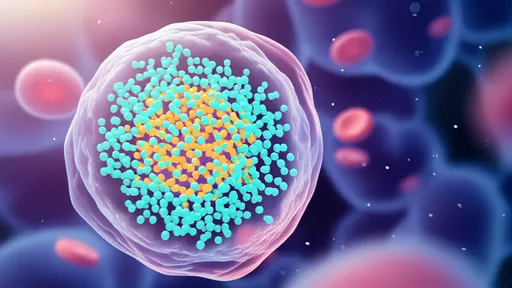The quest for miniaturizing data storage has reached its ultimate frontier: the atomic scale. Scientists and engineers worldwide are now grappling with the challenge of storing information in single atoms, pushing the boundaries of physics, materials science, and engineering. This pursuit, often termed atomic-scale memory, represents not just a technological leap but a fundamental rethinking of how we encode and retrieve information.
At the heart of this challenge lies the manipulation of individual atoms to represent binary data. Traditional hard drives use magnetic domains—clusters of millions of atoms—to store bits. In contrast, atomic-level memory aims to use single atoms as the smallest unit of storage. The implications are staggering: a device the size of a postage stamp could theoretically hold the entire Library of Congress several times over. But the road to such density is fraught with obstacles, from quantum mechanical effects to thermal instability.
One of the most promising approaches involves using scanning tunneling microscopes (STMs) to position atoms with precision. In 2016, researchers at Delft University of Technology demonstrated the ability to store data in chlorine atoms on a copper surface, arranging them in grids where the position of each atom represented a bit. While groundbreaking, this method remains impractical for commercial use due to its requirement for ultra-high vacuum conditions and cryogenic temperatures. The search continues for materials and techniques that might allow stable atomic memory at room temperature.
Thermal noise presents another formidable barrier. At the atomic scale, particles are in constant motion, and even slight temperature fluctuations can disrupt carefully arranged atomic configurations. Some teams are exploring the use of rare-earth atoms, which exhibit magnetic stability at higher temperatures. Others are investigating two-dimensional materials like graphene as potential substrates that could anchor atoms more firmly while allowing electrical or optical readout mechanisms.
The quantum nature of atoms introduces both challenges and opportunities. While quantum superposition can cause unwanted bit flips, it also opens the door to quantum memory applications where single atoms could store quantum bits (qubits). This dual nature has led to fascinating cross-pollination between the fields of conventional data storage and quantum computing, with discoveries in one area frequently informing the other.
Commercial viability remains distant, but progress continues at remarkable pace. IBM's 2017 demonstration of storing a single bit in a holmium atom marked another milestone, showcasing how carefully chosen atomic species can maintain magnetic orientation—the atomic equivalent of a 1 or 0—for hours at a time. Meanwhile, alternative approaches using the spin states of electrons or the vibrational modes of atomic nuclei suggest that the atomic memory landscape may eventually diversify much like traditional memory technologies did.
Beyond the technical hurdles, atomic-scale storage forces us to confront fundamental questions about the nature of information itself. At what point does the act of measuring atomic states to read data alter those very states? How do we develop error-correction for systems where every atom counts? These philosophical considerations are becoming practical engineering concerns as we approach the absolute physical limits of information density.
The environmental implications could be profound. Atomic memory promises extraordinary energy efficiency—theoretically requiring just a few photons or electrons per bit operation. In an era of exponentially growing data centers with massive carbon footprints, this technology might one day enable sustainable information storage at planetary scale. However, the manufacturing processes required to produce perfect atomic arrays at scale present their own environmental challenges that must be addressed.
As research institutions and tech giants race to overcome these challenges, the field remains wonderfully interdisciplinary. Physicists collaborate with computer scientists, materials engineers with quantum theorists, each bringing unique perspectives to what may become the defining memory technology of the mid-21st century. While consumer devices with atomic storage remain years away, each breakthrough brings us closer to a future where the entire sum of human knowledge might reside in a device smaller than a sugar cube.

By /Jul 2, 2025

By /Jul 2, 2025

By /Jul 2, 2025

By /Jul 2, 2025

By /Jul 2, 2025

By /Jul 2, 2025

By /Jul 2, 2025

By /Jul 2, 2025

By /Jul 2, 2025

By /Jul 2, 2025

By /Jul 2, 2025

By /Jul 2, 2025

By /Jul 2, 2025

By /Jul 2, 2025

By /Jul 2, 2025

By /Jul 2, 2025

By /Jul 2, 2025

By /Jul 2, 2025

By /Jul 2, 2025

By /Jul 2, 2025